
Back row, left to right: CEO and President Dave Brown and David Golder, Principal, Healthcare Services, IMC. Front row, left to right: IDOC board members, Janelle Davison, OD, Ansel Johnson, OD, and Katie Greiner, OD
Sponsored Content
By Margery Weinstein
Editor-in-Chief
Review of Optometric Business
Oct. 26, 2022
As communities become more diverse, more optometrists are understanding the value of having diverse representation on their staff. Creating a practice that lives out the principles of diversity, equity and inclusion (DEI) can be challenging. However, with help from the right industry partners, this challenge can have rewarding results.
In September 2020, IDOC CEO and President Dave Brown signed the CEO Pledge for CEO Action for Diversity & Inclusion, which aims to rally business leaders to advance diversity and inclusion within the workplace. Also in 2020, in partnership with Diversity Perspective, IDOC developed a multi-year learning and development curriculum for its employees, which has led to an in-depth exploratory look into implicit bias, allyship, courageous conversations and inclusion in the workplace.
In January 2021, IDOC announced the addition of three new OD board members to its Board of Directors, expanding representation from underrepresented groups and women, as well as bringing in the independent OD perspective. Outside of the board, IDOC works tirelessly to gain feedback from its members to ensure all voices are heard. “Every OD owner has a unique set of dreams for their practice, and, in the spirit of DEI, IDOC welcomes input from all of our ODs to learn how we can better serve the unique needs of their practice,” says Dave Brown, CEO & President.
And in October 2021, IDOC partnered with PVR Coaching & Consulting, an outside leadership and talent optimization firm, to conduct a DEI Needs Assessment. “The results of that Needs Assessment serve as a baseline from which to measure our progress, so we may continue our journey of growth and learning,” says Jill Johnson, Vice-President, People Strategy & Operations.
Four independent practice owners share how IDOC is reflecting in its own work the need to become more attuned to DEI principles, and how the organization is providing a model for practices and other organizations to follow.
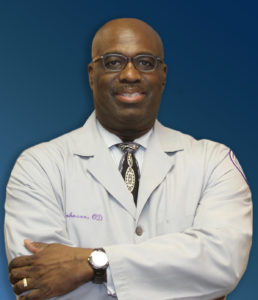 Reflecting, Representing & Serving the Needs of Diverse Populations
Reflecting, Representing & Serving the Needs of Diverse Populations
Ansel T. Johnson, OD
Vision Salon Eye Care Associates
IDOC Board Member
African Americans represent 13.6 percent of the U.S. population, and comprise a much smaller percentage of the current population of optometrists–just 2.7 percent.1 That means, not only that many patients are unlikely to have visited the practice of an African American OD. It also means young African Americans thinking about a career in optometry may have difficulty finding role models who look like them.
“When we are such a small percentage, we can seem invisible, or simply overlooked in favor of the familiar faces to the majority” says Dr. Johnson. “Many in the majority may not know people of color in the industry or take the extra effort to reach out to actively diversify their speakers, staff, vendors or c-suite pipeline. The huge lack in c-suite representation exacerbates the overall lack of diversity in our industry. Prospects of color need mentors, so when there is lack of mentorship it can be a problem. Just bringing a person in to check a box is not a solution. Building a diverse company or practice will continue to be difficult, however, studies show diverse businesses thrive better than less diverse companies.”
He says that IDOC has become a great ally to DEI efforts in the eyecare industry. “It has expanded inclusion of people of diverse ethnicity and backgrounds on its own staff,” says Dr. Johnson. “I like that IDOC has hired talented people of color. When brought onto its board I made it clear I didn’t want to be a token to check off on a box. The people they have hired are highly qualified and have enriched their staffing, including featuring people of color as speakers at their annual Connection meeting and throughout their company. They are walking the walk, but still have a ways to go. I am enjoying being on the ride with them.”
Dr. Johnson does his own part, with his Chicago area-based practice serving as an extern site for five optometry schools. “I enjoy sharing how we practice with student interns, and know African American and Hispanic students don’t have a lot of opportunities to engage in a practice that may mirror their own future private practice if they choose to go that route. My other students also enjoy training in a very diverse environment, and grow from their experience. In addition, Dr. Johnson sells the African American-owned frame lines, FUBU, Coco and Breezy and Vontelle, and said he is planning to add more.
IDOC’s marketing resources were a great help in getting the word out about these additions to Dr. Johnson’s optical. “We were the first to Premier FUBU and Vontelle African American eyewear lines in Chicagoland,” he says. “This was a big deal since the Chicagoland market is No. 3 in the U.S. IDOC Digital Media was responsible for getting us great social media engagement, which also generated many office visits. I have done several videos that I have sent to my IDOC Digital Media team that were enhanced, edited and posted to my social media.”
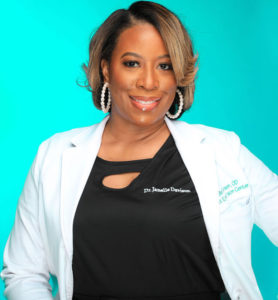 Inclusion & Acceptance
Inclusion & Acceptance
Janelle Davison, OD
Brilliant Eyes Vision Center
IDOC Board Member
It isn’t always easy to feel that you’re an accepted and recognized member of a profession, especially if you’re part of a minority group that is not yet well represented in the profession you have chosen. “Everyone wants to feel included and accepted. Growing up I was not always accepted for who I am, and even at times today I am not treated like my colleagues, or given the same opportunities, because of my gender and race,” says Dr. Davison. For that reason, Dr. Davison strives in her own practice to be as inclusive as possible.
“In my practice, I embody and live DEI. I make it my goal for EVERYONE to feel included–staff and patients. This has positioned me to be one of the top female minority-owned private offices in my county,” she says. “Over the years I learned how to use my personal experiences with misogyny and racism to influence and encourage my staff, patients and mentees to continue to self-advocate for themselves and their healthcare.”
Embracing all people in her practice is the right thing to do, but it’s also great for business. “When people feel loved and welcomed it translates to loyalty, referrals and increased practice revenue. We proudly display that we accept all walks of life and that my business is a female minority-owned business on Google.”
Dr. Davison says IDOC exemplifies the values of DEI: “IDOC, at my recommendation, has put a lot of emphasis on their internal DEI strategy. Per my feedback and guidance, IDOC decided to first build the foundation of trust and credibility through its internal commitment to DEI before expanding its DEI initiatives externally. In the years to come, IDOC intends to expand its influence and leadership in DEI through the IDOC Connection, IDOC Member Directors, vendor partners and training options for members. I am proud of IDOC’s progress. IDOC is making great strides and understands that DEI starts at home.”
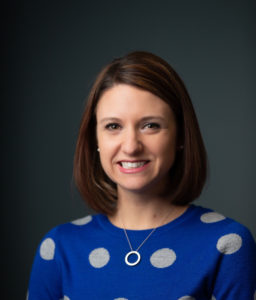
DEI as a Pillar of Practice Operations & Recruitment
Katie Greiner, OD
Northeast Ohio Eye Surgeons
IDOC Board Member
Saying that you support DEI is easy; it’s harder devoting the necessary time and energy to making plans for improvement in this area. Dr. Greiner says she appreciates that IDOC does this. She says that at quarterly board meetings, the organization spends around 30 minutes discussing DEI progress and the remaining work to be done.
Dr. Greiner says that DEI in recruitment in her practice is a focus for her. “I’m looking at generational mix, better gender mix and better ethnicity/race mix. I’m focusing on all key areas of DEI. Some people think it’s race alone, and it’s much broader than that,” she says.
Dr. Greiner says that her practice used to have narrow parameters of what was considered acceptable in appearance for employees. She has learned not to prejudge what patients do and don’t like culturally. “Our office was old-school. We were strict about everyone’s appearance, no unique hair colors, no tattoos showing at all. But we have come to realize that people have to be able to show creativity. Gone are the days when everyone had to be uber-conservative in their appearance in the healthcare setting.” We have people in our office now with blue streaks in their hair,” Dr. Greiner explains. “We had an 86-year-old patient, and my technician, who has a sleeve of tattoos on her arm, was working with this patient. The patient complimented her saying she always wanted a sleeve of tattoos too. She said her husband, who is war veteran, is covered in tattoos: ‘He has a reason behind them all, and I bet you have reasons too.'”
Having a staff that comes from a diversity of ethnic groups, races and cultures is especially helpful when building a practice: “These days, no matter where you live, you have more diversity today, so it’s easier for patients to relate to office staff when everyone is not the same cookie-cutter person. And in brainstorming, having a diverse staff helps you think outside the box because you have ideas from so many different backgrounds and lots of different life experiences they can use and bring to the table.”
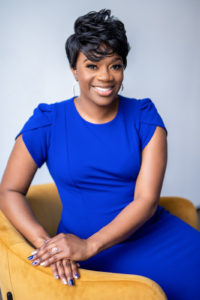 Caring for Under-Served Patient Populations
Caring for Under-Served Patient Populations
Essence N. Johnson, OD, FAAO
Community and Correctional Health Optometrist
Chief Visionary Officer
Diversity Perspective
IDOC DEI Training Partner
It’s a time of great opportunity in the shaping of DEI, says Dr. Johnson. “As the term becomes more familiarized and popularized, we have the opportunity to define what it looks like for our industry and how to apply it to our hiring practices and interaction with patients and our communities,” she says.
Dr. Johnson says that in her work as a community and correctional health optometrist, having patients see and work with doctors who look like them, and come from similar backgrounds, is essential: “We work with an under-served population of patients who benefit from having providers who look like them and staff who look like them too, and can relate on a cultural level.”
Dr. Johnson, who is not a native Spanish speaker, says she made an effort to become proficient enough in the language to communicate with patients who prefer to communicate in Spanish. “It has been very important for me to expand my ability to be bilingual. When patients know I can communicate well with them it builds their trust with me that I can provide good care for them,” she says.
The mistrust, and sometimes poorer level of care, that minority patients have experienced, can make many anxious and uncomfortable at a doctor’s office with no one who looks like them and/or no one who understands their culture: “We’re providing culturally competent care, helping patients who may be disengaged in the healthcare system because of past negative experiences, and helping them take greater control of their healthcare.”
Other Articles to Explore
Dr. Johnson says that, in addition being a woman of color, who speaks Spanish, it helps bridge the cultural divide that she is personally part of the community where she practices. “I live 15-20 minutes from our clinic,” she says.
Dr. Johnson, who has been an instrumental Training Partner to IDOC, notes that IDOC has been a great DEI ally with its focus on education. “As they get new employees, they have everyone go through DEI training, and in everyday workflow, they use DEI practices, so this is not seen just as mandatory training. They are truly building a culture and environment, and then from there, it can extend out to clinical practices and resources given to doctors.”
References
1. Zippia
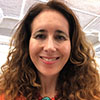 Margery Weinstein is editor-in-chief of Review of Optometric Business. You can contact her at: mweinstein@jobson.com
Margery Weinstein is editor-in-chief of Review of Optometric Business. You can contact her at: mweinstein@jobson.com

























